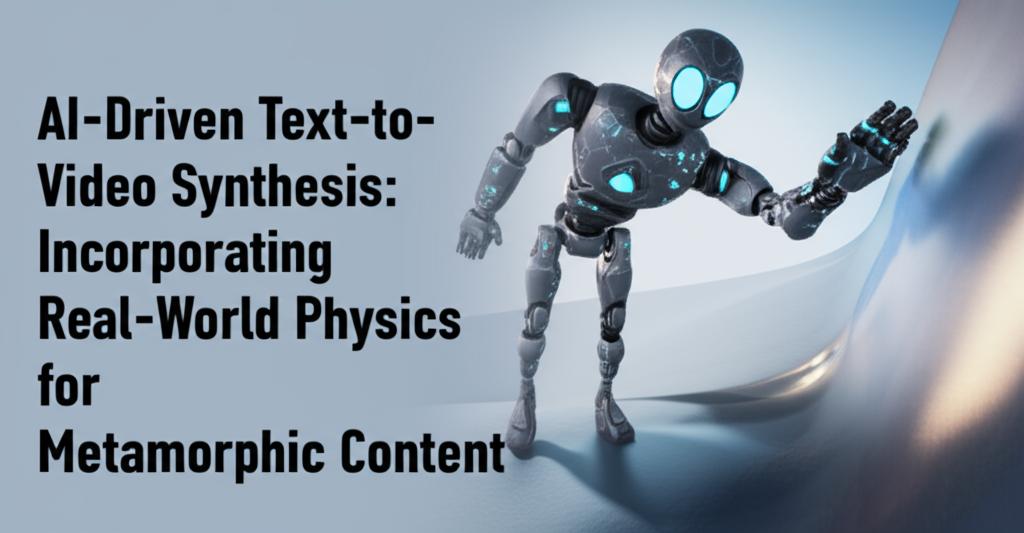The landscape of AI-driven text-to-video synthesis is undergoing a significant transformation, moving beyond simple visual representations to incorporate the complex dynamics of real-world physics. This evolution is crucial for generating not only visually appealing but also physically plausible video content, especially when dealing with metamorphic scenarios where objects or scenes undergo substantial changes in form or state.
A primary challenge in text-to-video generation has been the creation of motion and interactions that adhere to fundamental physical laws. Early models often produced videos with objects moving unnaturally, defying gravity, or passing through each other without consequence. Current research is intensely focused on integrating physics engines and learned physical priors into the generative process. This involves training models on vast datasets that include information about object properties, forces, and environmental interactions. By understanding these underlying principles, AI can generate videos where, for instance, a ball realistically bounces and rolls, water flows and splashes convincingly, or structures collapse in a physically coherent manner.
The concept of "metamorphic content" takes this a step further. It refers to AI’s ability to generate video sequences depicting objects or entities transforming—perhaps a block of ice melting into water that then evaporates, or a seed growing into a tree that then sheds its leaves. For such transformations to be believable, the AI must not only understand the visual changes but also the physical processes driving them. This means incorporating principles like thermodynamics for melting and evaporation, or biomechanics for growth processes. The goal is for the AI to synthesize these transformations dynamically based on textual prompts, such as "a snowman slowly melting under the sun," ensuring the process unfolds in a way that aligns with our understanding of the physical world.
Recent advancements leverage sophisticated neural network architectures, including transformers and diffusion models, often combined with physics simulators or learned dynamics models. Some approaches aim to explicitly model physical parameters, while others learn these implicitly from extensive video data. The integration of compositional generation is also key, allowing models to understand and depict complex interactions between multiple objects and environmental factors, all governed by physical rules.
However, achieving seamless and accurate physical realism in AI-generated videos remains a frontier. Challenges include the immense computational cost of simulating complex physics, the difficulty in acquiring diverse and accurately labeled training data representing a wide array of physical phenomena, and ensuring temporal consistency across longer video sequences. Furthermore, controlling the subtle nuances of physical interactions through text prompts without sacrificing plausibility is an ongoing area of research.
Despite these hurdles, the progress is tangible. Newer models are demonstrating improved understanding of concepts like object permanence, collision dynamics, and material properties. As these AI systems become more adept at embedding real-world physics into the video generation pipeline, we can expect a new wave of content creation tools capable of producing highly realistic, dynamic, and imaginative metamorphic scenarios, opening up vast possibilities for entertainment, education, simulation, and artistic expression. The focus continues to be on building models that don't just "paint pixels" but understand and represent the underlying physical world in motion.

